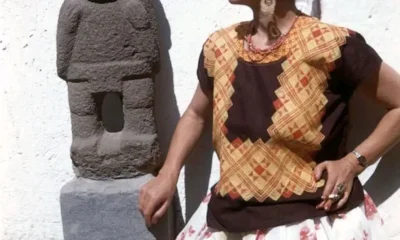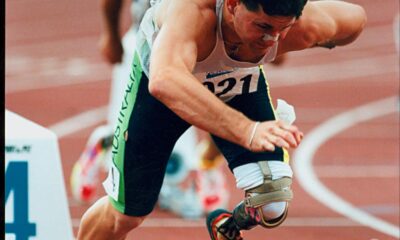Business
Disability in the workplace: Making inclusive environments
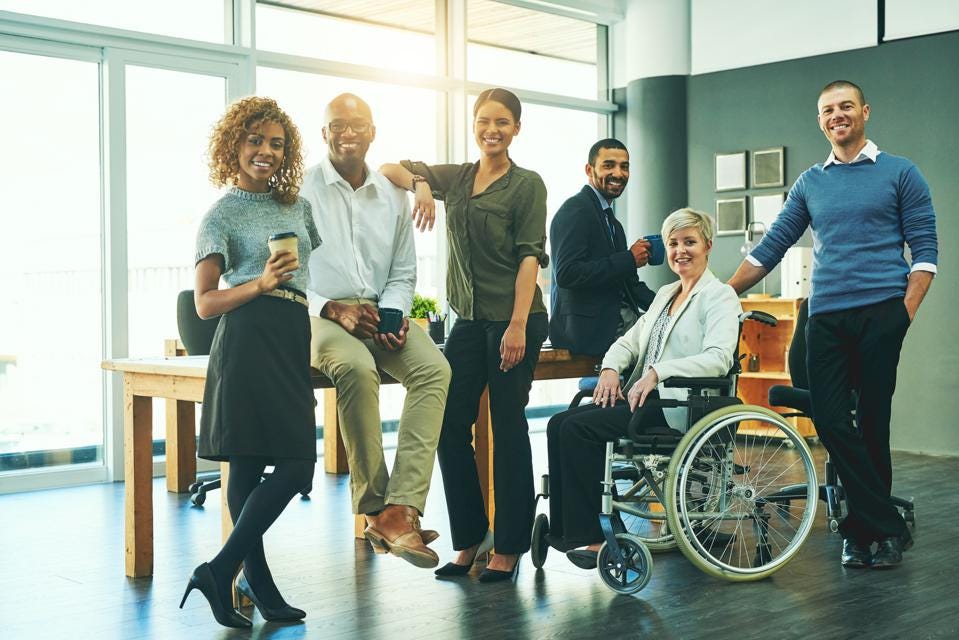
Let’s work together to make the workplace a more accessible place for those with disabilities
First things first, it’s essential to keep in mind that all people with disabilities, impairments or chronic health conditions have inherent worth and should be treated with the same respect as anybody else. Additionally, people with disabilities are often exceptionally capable and require little help from others. However, there are a few things non-disabled people can do to make things to make disability in the workplace a bit easier.
The views of coworkers and peers have a significant impact on the self-esteem, performance, and job satisfaction of employees with disabilities at work and in the community. Even in an environment where there is a strong commitment to these policies, negative attitudes in the workplace or social circles are frequently the biggest obstacles to inclusion and professional progression for disabled individuals.
In 2021, there were 4.4 million disabled people in employment in the UK. Which is an impress 300,000-person increase since 2020. But, with 14.6 million disabled individuals in the country, the number could definitely be better with improved accessibility and inclusion.
There are many benefits to hiring people with diverse abilities that aren’t widely acknowledged. For instance, according to a Forbes survey, 56% of businesses with yearly revenues of $10 million or more strongly concur that having a diverse staff fosters creativity; collaboration results in achievement.
If you’re a business owner, manager or even an employee, here are six ways you can contribute to making society and the workplace more inclusive for disabled people.
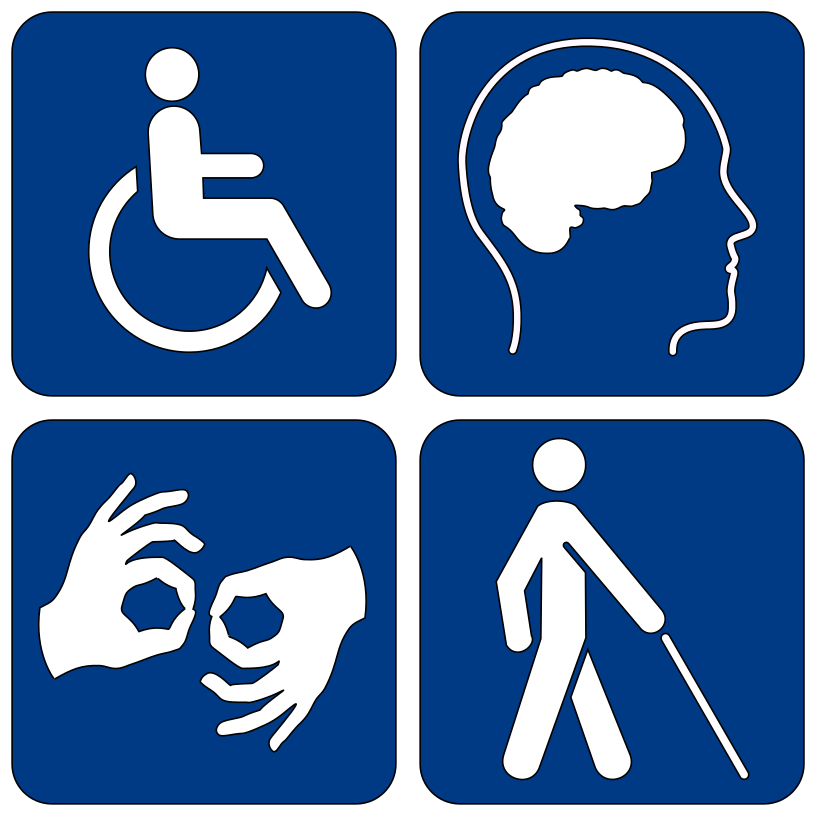
First, inquire, then take their advice
Don’t presume that everyone needs assistance just because they live with a disability. Asking if there is anything you can do to make the process go more smoothly or effectively for them is great. But, listen to them if they say they’re just fine because they know best how to address their needs.
However, if someone does ask for help, make sure to request clear instructions on how you may assist.
Listen intently and speak clearly
This step might not be relevant for all disabled individuals. But, if someone has a developmental disability or a condition that impacts their hearing or speech, this step is essential.
Using concise language, and matching your speech’s tempo and vocabulary to the person you’re conversing with is a great way to effectively communicate with those with developmental disabilities or other cognitive problems.
But keep in mind, unless you are told otherwise, they are capable of making their judgments. So, allow those who struggle with their speech to complete their statements and avoid speaking for them or interjecting.
Address people directly
This might seem self-explanitory, but if you’re talking to someone with a disability, speak to them, not anyone else. Depending on the nature of their disability, some people may use interpreters who will relay information between. And, while it might feel natural to look towards the interpreter when speaking, it’s far more polite to make eye contact with the disabled individual.
Observe personal space needs
Some people who use a wheelchair, walker, or cane consider these devices to be part of their personal space. So, leave a comfortable space between yourself and these devices.
In a similar vein, never begin pushing a wheelchair without first getting consent from the user. And, never move, touch, or lean on a mobility aid. Mobility aids are often the only way disabled people can move around, so moving or touching them can cause severe safety issues. It’s also just not polite.
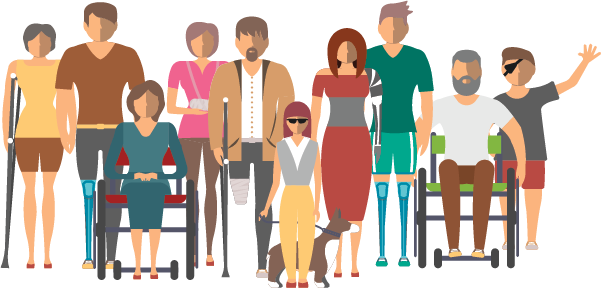
Be accommodating to the families of those with impairments
Many people with disabilities or chronic health conditions have family members who take care of them or keep them company. So, accommodating these individuals and making them feel welcome is a great way to improve accessibility.
Check accessibility before scheduling meetings
And, finally, before a meeting, confirm the location and send specific details regarding the location’s accessibility. To ensure that everyone can participate fully in the meeting, find out if there is anything you can do to get ready.
Remember that mistakes do happen! The most crucial thing to keep in mind is to just ask questions and follow leads from others. Some of these suggestions may seem odd at first. especially if you’re requesting information from a new employee or someone you just met.
We instinctively want to avoid difficult situations and may unintentionally try to avoid dealing with coworkers who have disabilities, which leaves others feeling truly excluded. Once you get through the initial difficulty, things get much simpler. On the other hand, every time you avoid them, it becomes harder and more embarrassing to ask them about their disability. Don’t allow discomfort to stand in your way.
To get the best performance out of employees, you must first give them an enabling environment as well as a sense of belonging showing them that you care. Even if the task is much more challenging, they will find a way to complete this assignment faster because this will boost their inner morale and unlock their potential.
Business
Starbucks and its commitment to accessibility: Creating inclusive spaces for everyone

Starbucks Coffee Company announced on February 14th that it will leverage its growing store presence to support and promote the inclusion of partners, clients, and communities it serves. To achieve this, the company has created an Inclusive Spaces Framework, which aims to enhance independence, choice, and comfort for all its consumers and employees: “Building and scaling an Inclusive Store Framework is central to our mission of connection and will lead to greater access for all” stated Katie Young, Senior Vice President of Store Operations.
One of the first Starbucks customers based on the Inclusive Spaces Framework/Starbucks
Starbucks’s Inclusive Spaces Framework has been developed by a distinctive community of customers, workers, partners, and accessibility experts, with the primary goal of providing scalable accessibility solutions for all commercial spaces. This concept began to take shape during the Covid-19 pandemic, where social distancing and the risk of contracting the disease prompted some branches to create specific time blocks. During these blocks, immunocompromised, elderly, and disabled customers could shop in a less crowded environment.
Starbucks inaugurates its first café supported by the principles of the Inclusive Spaces Framework
On February 16th, Washington, D.C. became the first city to open a Starbucks designed to provide accessible service for everyone. These innovations include a multitude of improvements, both physical and digital, that streamline the entire customer interaction process with the establishment and staff, enabling unrestricted access.
A new employee at the Washington D.C. Starbucks showcasing the facilities/Starbucks
Among these novelties, the coffee company has highlighted updates to the point-of-sale (POS) systems, which have been transformed into portable devices, making it easier for customers to make purchases and acquire products. Through an intuitive design, supported by a voice assistant and accompanied by visual confirmations, this setup caters to the needs of all customers without any distinction.
On the other hand, this revamped store features new lighting and an improved sound system, both designed to offer a more inclusive experience by avoiding glare and reverberations. Additionally, the order tracking panels in this store have been updated, allowing customers to easily and instantly know which stage of preparation their purchase is in. Furthermore, multiple communication channels have been enabled to notify the customer when their order is ready.
Finally, the store has been designed to ensure the complete independence of people with disabilities when accessing and placing their orders. This is achieved through electric doors, which can be activated by a button at different heights and angles, reducing the effort required to open them. Additionally, continuous, and obstacle-free pedestrian pathways have been created, and the counters are lower with overhangs to accommodate wheelchairs, making interaction with employees and the store more accessible.
The new staff at Starbucks in Washington D.C./Starbucks
However, for most retail centers, remodelling their premises to comply with ADA (The Americans with Disabilities Act) regulations poses a significant challenge. That’s why Starbucks will not only begin remodelling its establishments but also ensure that its framework of inclusion is accessible to everyone, just like its stores. This framework will provide a gradual program for designing inclusive spaces that enhance the retail environment, surpassing the requirements of the ADA.
By: Álvaro Lago
For latest updates Download P+us app available on Google App Store
Business
Aarti Sahgal: Creating A World In Which People With Disabilities Belong

Aarti Sahgal is a woman with a mission. She is the founder and CEO of Synergies Work, a non-profit organization that helps entrepreneurs with disabilities develop sustainable enterprises. She is also a mother to two kids, one of whom has Down syndrome. She understands directly the obstacles and opportunities that individuals with disabilities experience in society, and she is committed to creating a world in which they belong.
Sahgal’s work grew out of her personal experience parenting a disabled child and discovering a lack of inclusivity and assistance in the education and employment systems. She recognized that people with disabilities possess special skills and capabilities that are frequently overlooked or underestimated by others. She chose to leave her corporate position and devote herself to enabling people with disabilities to achieve their hobbies and goals.

Synergies work provides end-to-end business solutions, bridging the opportunity gap between the disability and business sectors. It provides training, mentoring, funding, and networking opportunities for entrepreneurs with disabilities, as well as access to a varied and supportive community. It also collaborates with businesses and groups to increase disability inclusion and diversity in the workplace and marketplace.
Since its establishment in 2016, Synergies Work has assisted over 200 entrepreneurs, the vast majority of whom are women and people of color. The company aims to empower 1 million new entrepreneurs with disabilities by 2027 by collaborating with disability organizations and businesses that prioritize creating an inclusive ecosystem.
Sahgal aims to represent and reflect the different communities in which she works, as well as to foster a workplace climate in which everyone has the opportunity to participate, grow, belong, and succeed. Sahgal’s Disability Inclusion Action Plan aims to promote inclusivity and diversity as a source of strength and value.
By- Rowland Obiosah
Business
Unveiling P+US App (Plus News): A Revolutionary Leap in Inclusive Media!

In a groundbreaking move towards a more diverse and connected media landscape, the Brand Advance Group (BA Group) has just launched its latest venture – the P+US App, affectionately known as Plus News. This app is set to redefine the way the group’s audience can consume its news, serving as a dynamic platform bringing together voices from various communities, including Black & African American, Afrobeats, Hispanic, LGBTQ+, disABILITY, GenZ, and beyond.
This initiative is just the first step in the rollout of a new generation of media channels by the BA Group and its US Division, BA Diversity Media Inc. The P+US app stands at the forefront, embodying the commitment to amplify minority-owned and operated media.

To celebrate this monumental launch, the BA Group is extending exclusive invitations to the Generation Black and Generation Hispanic TV channel launch party. The first 100 individuals to download the app and share it within their circles will secure a coveted spot at this must-attend event, scheduled to unfold in the vibrant landscapes of both NYC and London come March 2024.
BA Group’s CEO, a visionary in the media industry, expressed enthusiasm about this transformative leap. “Launching this app to house our minority-owned and operated media is the first stage of our transition from an SSP business to a media owner for a new generation. With over 7 digital channels and 3 CTV channels, all powered by our cutting-edge Cultural Intelligence technology, the P+US app provides our readers with a seamless, centralized space to engage with our diverse content. From the streets of Africa to the landscapes of India, the urban beats of the UK to the vibrant scenes in Mexico – our talented writers from across the globe are bringing a fresh perspective to every news article. It’s an exciting time in our evolution!”
As we step into this new era of media, the P+US app promises not just news but an immersive journey into the diverse narratives that shape our world. Join the revolution, download P+US, and be part of the story as it unfolds from the heart of communities worldwide!
Google App Store:
https://play.google.com/store/apps/details?id=com.newandromo.dev2408362.app3483231

